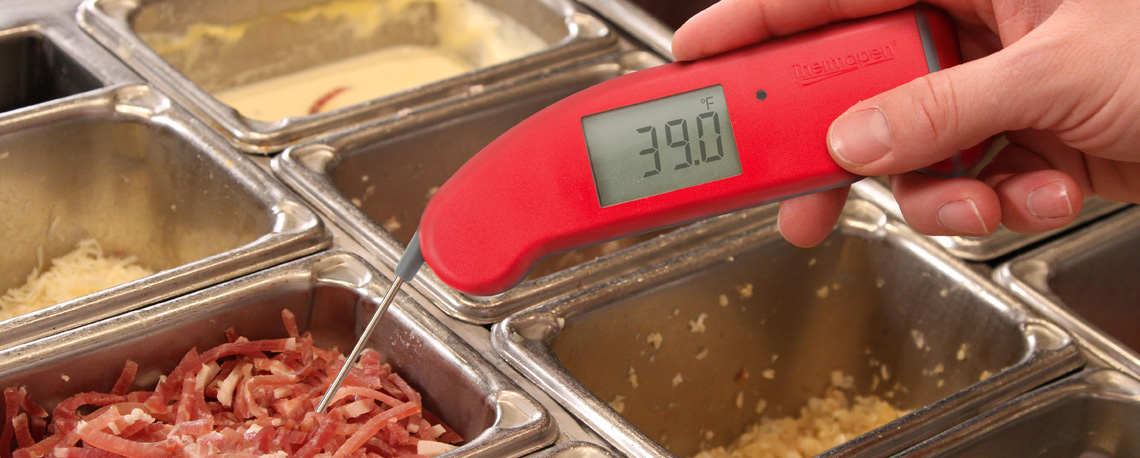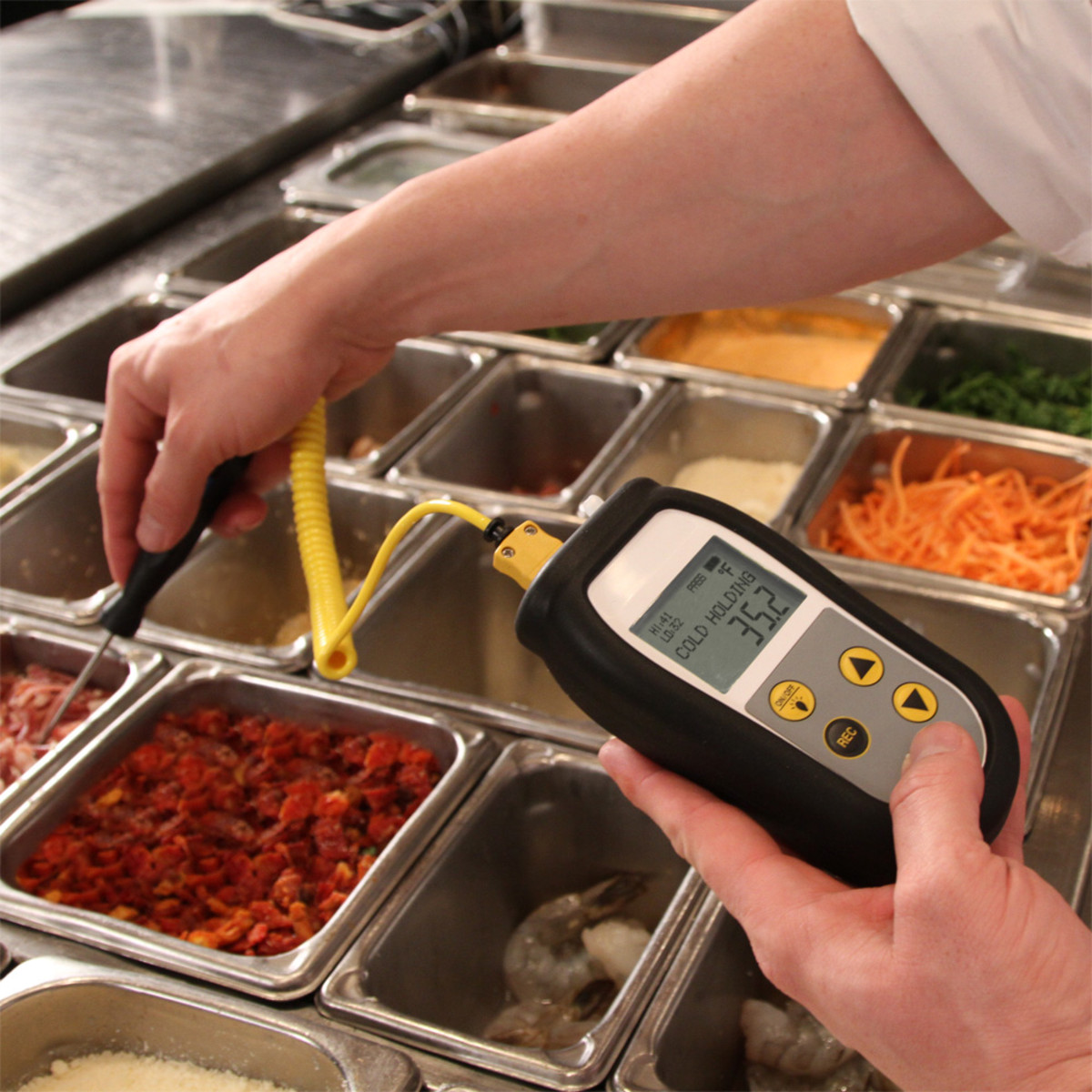The Temperature Danger Zone: What It Is and How to Avoid It

What is the Temperature Danger Zone
The USDA calls the range between 40°F and 140°F (4°C and 60°C) the “Temperature Danger Zone” (TDZ) because it is the range in which harmful bacteria multiply quickly.
What do we mean by “multiply quickly?”
We mean doubling in as little as every 20 minutes. If that doesn’t sound super fast to you, consider this: If you have just 150 salmonella bacteria floating on a soup, in 20 minutes there could be 300, 20 more minutes could be 600. At this rate, you will have enough salmonella bacteria to cause serious illness (~100,000) in just over 3 hours. If you start with 1,000 bacteria, you get there in under 2 hours and 15 minutes. This is called exponential growth, and it adds up very quickly.
Because bacterial metabolism is linked to temperature, however, you can prevent this bacterial build-up by controlling the temperature of your food. The safe zones are below 40°F (4°C)—temperatures too cold for most bacteria to reproduce— and above 140°F (60°C), temperatures that begin to be lethal to bacteria.
So what does this mean for you and your business? Teach your staff about the Temperature Danger Zone and how to avoid it. Here are 4 tips to help you and your staff avoid the danger zone:

Tip 1: Train Your Staff
Most restaurants already have a formal system in place to train new staff on food safety and the dangers of mishandling food. However, over time employees often forget or don’t prioritize food safety as much as they should. Regular reminders of what the temperature danger zone is and how fast bacteria can grow within the danger zone can be powerful tools in driving food safety compliance. Posting our Food Safety Poster showing critical temperatures in your kitchen is an easy way to keep The Danger Zone top of mind, as well.
Tip 2: Buy an Accurate Thermometer
Equally as dangerous as not having a thermometer is using an inaccurate thermometer. Erroneous readings can lead you into believing your food is within safe temperature ranges when it is not. Dial thermometers often drift out of calibration and should not be trusted. They also break easily. Buying a long-lasting, high-quality digital thermometer may cost you a little more up front, but it saves you money in the long run by eliminating the cost of constantly purchasing new cheap thermometers when they break. More importantly, it will mitigate the significant risk of taking inaccurate readings.
Tip 3: Verify Accuracy Correctly and Often
Digital thermometers can sometimes drift out of calibration. When this occurs it should be corrected immediately. An ice bath test is an easy way to verify any thermometer’s accuracy. However, done incorrectly, it too can lead to inaccurate readings. Follow the simple steps on our Ice Bath Instructions blog post to make a proper ice bath and correctly verify the accuracy or drift of your thermometers every time!

Tip 4: Automate Line Check Temperature Recordings to Eliminate Food Safety Risks
Staff errors and pencil-whipping are issues most restaurant managers face when recording daily line checks in paper logs, which poses serious food safety risks. Thermometers with built-in line checks, and Bluetooth probes that communicate to smartphone apps mitigate these risks by storing readings electronically and driving employee compliance. Employees know instantly when danger zones are breached and can take corrective action immediately. Improve your line check process with a Saf-T-Log HACCP handheld thermometer or Thermapen Blue a Bluetooth connected temperature probe.
